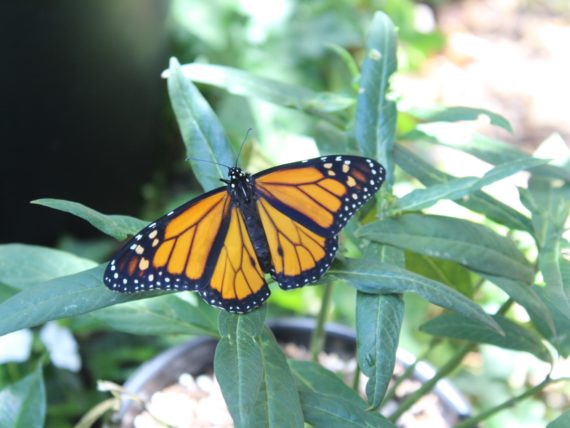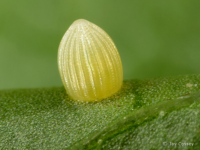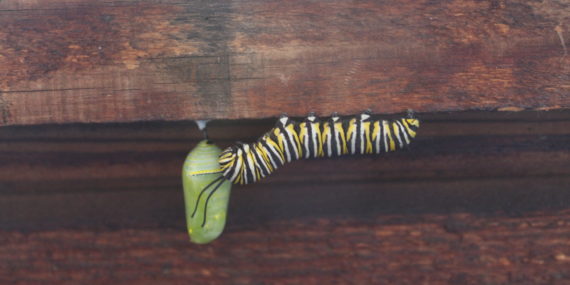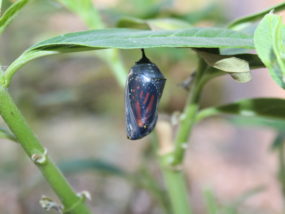Butterfly Gardens

Judith Wolinsky
By Judith Wolinsky
The iconic black, orange and white monarch butterfly finds a welcome home in San Diego gardens. Besides being a beautiful addition to your garden, it’s an important pollinator.

Monarch egg. Jay Cossey
Creating a monarch garden habitat is easy, enjoyable and a fun multigenerational project. You will also be helping the monarch, whose numbers have been rapidly declining, survive and increase their population. The food basics are milkweed, the monarch’s only host plant for egg laying and caterpillars to eat, and nectar plants with flat flowers for adults. The garden can be in containers or in the ground. The other basics are shelter from the wind and rain, partial or full sun, water source, and maintenance and pest control schedule. Insecticides are not used in a monarch garden.
There are two San Diego monarch populations. The first are over-winterers that fly to sites along the California coast each fall primarily from Arizona, New Mexico, and west of the Rockies, stay the winter then head back east. Their numbers have plummeted 99.4% from the millions first counted in the 1980’s by the Xerces Society. Last year’s Xerces annual count was 28,429, a drop of 86% from 2017. A group of governmental agencies recently adopted a western monarch butterfly conservation plan and Xerces Society has created a western monarch call to action.
The second San Diego population is the year-round residents. They are here all year because of non-native milkweed planted in home and public gardens that, unlike native milkweed, does not go dormant over the winter.

Judith Wolinsky
Planting native milkweed is encouraged for monarch health. One reason is continuing research is showing the percentage of monarchs with
Non-native milkweed, first introduced into the U.S. from South and Central America in the last century, by not going dormant in the winter like native milkweed, has upended the historical relationship between monarchs and native milkweed. When native milkweed is dormant there are no monarchs in San Diego other than the over-winterers at the coast.
There is a compromise if you have non-native milkweed. Cut it back and keep it at six inches tall over the winter to mimic native milkweed’s dormancy and remove all plant debris to get rid of any OE spores. There will be questions and information about OE on the survey.
Having native milkweed and nectar plants is important for your garden not only because of OE. Native plants in general are the most compatible with native fauna, are water-wise, don’t need soil amendments and have less pests.
The five main San Diego native milkweeds are narrow leaf milkweed, Indian milkweed, California milkweed, rush milkweed and desert milkweed. San Diego native plant nurseries sell them or you can grow natives from seeds purchased online or locally.
Some nectar plant choices are butterfly bush, cosmos, lantana and white, California, pozo blue and other native sages. Choose your plants so that you always have flowers blooming from early spring through the fall. Read plant tags and seed packet backs for growing and blooming information and instructions.

Judith Wolinsky
Nectar plants will not only entice monarchs but also other pollinators, making for a vibrant garden habitat with brightly colored flowers and engaging visitors. For more monarch and pollinator native plant ideas and information, visit calflora.org and Xerces.org.
For monarch survey information email: monarchbutterflysurvey@gmail.com.
This article first appeared in the San Diego Union-Tribune on March 3, 2019
Wolinsky is a UCCE San Diego County Master Gardener and founder of Monarch & Friends. Monarch & Friends’ goal is to help monarchs survive and thrive. It’s free to join and members receive a monthly email newsletter about monarchs, garden habitats and monarch news. Email: Monarchandfriends@gmail.com to join.

